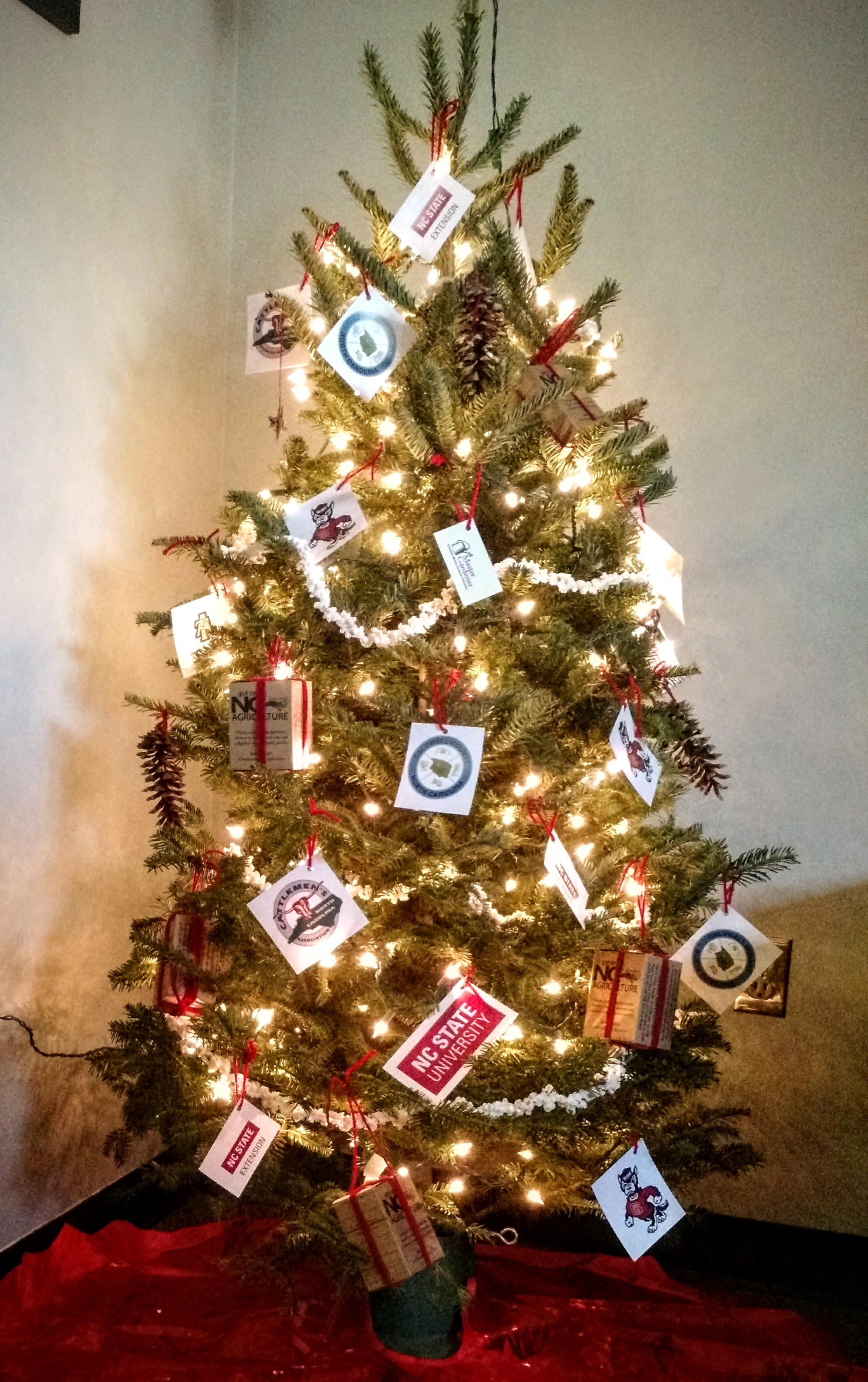N.C. is a Leader in Christmas Trees
go.ncsu.edu/readext?758827
en Español / em Português
El inglés es el idioma de control de esta página. En la medida en que haya algún conflicto entre la traducción al inglés y la traducción, el inglés prevalece.
Al hacer clic en el enlace de traducción se activa un servicio de traducción gratuito para convertir la página al español. Al igual que con cualquier traducción por Internet, la conversión no es sensible al contexto y puede que no traduzca el texto en su significado original. NC State Extension no garantiza la exactitud del texto traducido. Por favor, tenga en cuenta que algunas aplicaciones y/o servicios pueden no funcionar como se espera cuando se traducen.
Português
Inglês é o idioma de controle desta página. Na medida que haja algum conflito entre o texto original em Inglês e a tradução, o Inglês prevalece.
Ao clicar no link de tradução, um serviço gratuito de tradução será ativado para converter a página para o Português. Como em qualquer tradução pela internet, a conversão não é sensivel ao contexto e pode não ocorrer a tradução para o significado orginal. O serviço de Extensão da Carolina do Norte (NC State Extension) não garante a exatidão do texto traduzido. Por favor, observe que algumas funções ou serviços podem não funcionar como esperado após a tradução.
English
English is the controlling language of this page. To the extent there is any conflict between the English text and the translation, English controls.
Clicking on the translation link activates a free translation service to convert the page to Spanish. As with any Internet translation, the conversion is not context-sensitive and may not translate the text to its original meaning. NC State Extension does not guarantee the accuracy of the translated text. Please note that some applications and/or services may not function as expected when translated.
Collapse ▲For many of us, the Christmas season couldn’t get here quick enough this year. 2020 has been full of unimaginable craziness, but it seems the spirit of Christmas is shining bright. Early indications are, this Christmas season, tree sales are up.
The Fraser fir is the Cadillac of Christmas trees, but it’s not the only Christmas tree. In North Carolina, there are more than a dozen trees grown as Christmas trees. These include; Canaan fir, Concolor fir, Nordmann fir, Turkish fir, blue spruce, Norway spruce, white spruce, eastern red cedar, Leyland cypress, ‘Carolina Sapphire’ Arizona cypress, ‘Blue Ice’ Arizona cypress, ‘Green Giant’ arborvitae, white pine, Virginia pine, and Scotch pine. However, 96% or more of production in NC is the state’s native tree, Fraser fir.
North Carolina is second only to Oregon for total Christmas tree sales. Annual sales for NC are 5.4 million trees; Oregon is 8.5 million trees. Michigan trails behind with 1.3 million in annual tree sales, with Pennsylvania and Wisconsin rounding out the top five states for Christmas tree sales. Avery County leads North Carolina in tree production.
Naturally, Fraser firs grow at 4500 ft in elevation. However, if planted, they can grow on North facing slopes down as low as 2300 ft elevation.
Many Western North Carolina farmers make a living growing Christmas trees. There are 1300 Christmas tree farms in North Carolina totaling 30,000 acres. Annual tree sales in our state are estimated to be $350 million. However, this is not easy money for tree farmers. It takes 10 years to grow a Fraser fir. The farmer makes multiple visits to each tree every year. The trees have to be shaped and fertilized, and weeds have to be controlled.

North Carolina grown trees make Christmas a little brighter for millions of homes. (Credit Seth Nagy)
There is a lot of effort that goes into producing a Christmas tree. If you have a live tree this year, follow these tips to keep it looking its best.
- Use a tree stand that holds at least a gallon of water.
- Cut at least ½-inch off the trunk of the tree. That is so the tree will take up water easier. If you need to store the tree before setting it up in the home, put it in the shade in a bucket of water.
- Have problems with allergies? You might consider washing the tree outside with a garden hose. This will remove any pollen or dust and will also knock off any dead needles. Allow the tree to dry off completely before bringing it into the home.
- Check the water level every day to be sure there is enough and that the tree is using water. Dry trees can take a day or two before taking up water. Also, trees that were very cold may take some time to take up water again. Never add anything to the water. All your real tree needs is fresh water.
- Display the tree away from heat sources. Use lights that are in good working condition that are UL certified. Unplug the lights when you leave the house or go to sleep at night.
- If the tree isn’t taking up water, make another fresh cut on the stump. If you can’t do this, then drill a series of holes around the trunk below the water line.
- Fraser fir trees can often stay fresh indoors for 40 days. However, if your tree dries out, take it outside.
If you have agricultural questions, visit us any time at caldwell.ces.ncsu.edu or contact us during normal business hours at the Caldwell Extension Center at 828-757-1290.




